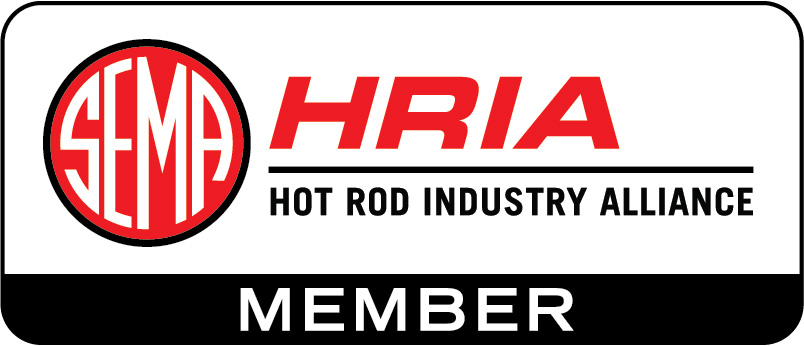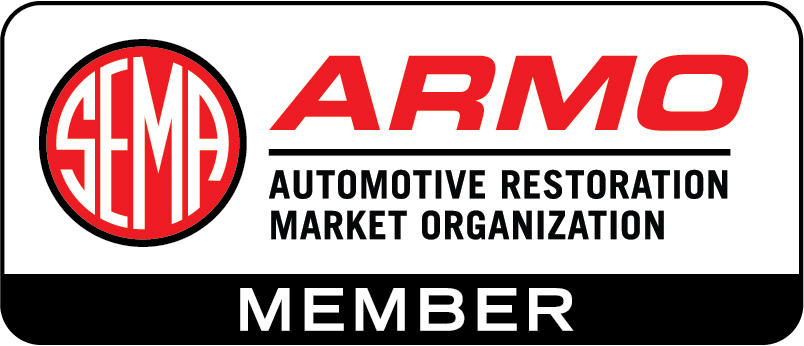
General
Why should I use reflective materials?
Reflective materials reduce heat soak to interiors, keeping drivers cool. They also block heat from floorboards, gas tanks, fairings, transmission tunnels, and engine components. Heat reflective materials also protect wires, cables, hoses, pipes and tubing from radiant heat sources that could cause damage or shorten component life, and prevent things like vapor lock or starter heat soak.
How do these reflective materials work?
The outer layers reflect heat away like a mirror, while the glass fiber backing layers insulate and protect. Simple peel and stick application on selected products make quick work of protecting critical areas, while others can attach with hook and loop enclosures.
What’s the difference between Reflect-A-Gold and Reflect-A-Cool? Why would I pick one over the other?
Gold reflects 17% more heat than Cool, but Cool is more affordable. Use Gold in the areas where heat is most critical. Use Cool everywhere else.
Can I use Heat Shroud on my exhaust pipes?
Nope. Heat Shroud is meant to keep cold things cold. The exhaust pipes would burn it up.
Are any of these materials electrically conductive?
Yes, the aluminized sheets are. You’ll need to insulate any open connections where they might come into contact.
Will Quick Fix Tape insulate against an electric current?
Yes, up to 8,000 volts.
What is the temperature range that Quick Fix Tape can handle?
Quick Fix Tape can withstand temperatures ranging from -65°F to 500°F.
Can you apply Quick Fix Tape to wet surfaces?
Yes!
How much can Quick Fix Tape stretch?
Quick Fix Tape can stretch up to 3x its length.
How strong is Quick Fix Tape?
Quick Fix Tape has a tensile strength of 700psi.
What is the temperature rating for Easy Loom?
Peak temperature rating of 345°F with continuous of 300°F. Melting point is 500°F.
What colors does Easy Loom come in?
Just black.
How much wiggle room do I have with Easy Loom?
The overlap in the sleeve allows it to expand roughly 1/8" from the stated size.
How do I wash my Oil Rug?
Oil Rug isn't meant to be washed and re-used. Just keep it until it's too full or dirty to keep around, then toss and lay down a new one.
I want to place an international order, but the shipping is really expensive! Can you help me?
Yes! We have other shipping options available for offline orders. Contact us here.
BOOM Mat™
How does BOOM Mat Damping Material work?
BOOM Mat dampens sound as it hits body panels by absorbing the tiny vibrations they impart. It does this by adding mass to the panels which increases the rigidity of the panel. Less vibration means less noise.
How effective is BOOM Mat?
In our show demonstrations, we use a small 1” inch square piece of Boom Mat applied to a large 20” inch percussion cymbal. When the cymbal is struck it produces virtually no noise, only a short, low-pitched clank.
PSA? What is that?!
It's not a Public Service Announcement like you're thinking! It stands for Pressure Sensitive Adhesive, or "Peel n' Stick Adhesive" as some like to say.
What is the temperature range of BOOM Mat?
BOOM Mat should be installed while the ambient temperature is 60°F or greater to ensure proper adhesion. Once installed, it can maintain adhesion from -30°F to 300°F.
How much BOOM Mat do I need?
For most vehicles we recommend 50% coverage of the area with our standard 2 mm thick BOOM Mat material. For customers with larger, more powerful audio systems, we have BOOM Mat XL. At 4 mm thick, it can be used to cover more area maximizing the vibration damping effect.
How should I install BOOM Mat?
BOOM Mat install requires little prep work. As with any adhesive material, the surface must be free of any debris. Once cleaned, cut BOOM Mat into the desired shape necessary for the area of coverage; strips or squares work well. Peel off the paper backing and place in large, flat areas like the floor, doors, body, and ceiling.
What tools do I need to install BOOM Mat?
A utility knife or scissors will be required for cutting. You may also need basic hand tools to remove door panels and trim. A roller can be used to apply even pressure on all surfaces to ensure proper adhesion.
What's the best way to apply Boom Mat headliners?
BOOM Mat headliners should be installed while the ambient temperature is 60°F or greater to ensure proper adhesion. Colder temperatures will prevent the adhesive backing from curing properly. Hold firmly to the ceiling as gravity can work against the adhesive before it's fully cured. For vehicles with removable tops, we recommend removing the roof and turning it upside down to ease installation.
Exhaust Wrap
Why do I want to wrap my headers, pipes, or tubular manifolds?
Wrapping pipes helps control exhaust temperatures and reduces radiant underhood heat. Hot exhaust gases flow faster, improving exhaust scavenging which in turn adds power. Limiting radiant heat inside the engine bay also lowers ambient temperatures for electronics, air intakes, and firewalls. Cooler components last longer and work better. Cooler drivers perform better, too!
Will your wrap work on my stock exhaust system?
Yes. You can wrap your original exhaust pipes to control heat. Wrapping stock cast exhaust manifolds can be difficult, for this application we recommend using our Form-A-Shield product. Form-A-Shield is designed to cover odd shapes and is easy to install over odd shaped parts. We do not recommend wrapping titanium exhaust pipes or manifolds.
What is exhaust wrap made of and does it contain asbestos?
First and foremost, there is absolutely NO ASBESTOS in any DEI product. DEI Traditional exhaust wrap is primarily constructed of glass fiber material with a proprietary coating. The combination helps increase the wrap’s thermal resistance when compared to other brands. Our Titanium brand exhaust wraps use basalt as their primary material. Basalt fibers can break off, but not to the degree that glass fibers do, and the basalt fibers are non-respirable (meaning they are too big to inhale).
I heard that exhaust wrap holds moisture and rusts out pipes!
Any mild steel exhaust pipe will rust over time with or without exhaust wrap. Our wraps won’t draw moisture from the air, but if you ride or drive in wet conditions without letting the wrap dry off, it can lead to accelerated oxidation. If your wrap gets wet, keep the engine running long enough to dry the wrap.
For even more protection, we recommend our HT Silicone Coating to seal and protect. Along with adding color to the wrap, HT Silicone Coating increases the longevity of your wrap by locking the fibers together.
How do I use HT Spray?
Spray on one coat at a time. Allow each coat to dry fully before applying the next coat. We recommend at least 3 coats. Cure at around 400°F for approximately 2 hours. This can be done in an industrial oven or by running the engine with the pipes installed. Note: HT spray does fade over time, so you’ll want to reapply periodically.
See our slightly modified instructions below for use with Titanium wrap.
What about using HT Spray on Titanium? Do I need to do anything special?
Titanium is durable enough that it doesn’t need HT Silicone Spray like traditional wraps, but it can still benefit from its use. It can also help you achieve the look you want. Note: HT spray does fade over time, so you’ll want to reapply periodically.
To get the best adhesion on Titanium wrap; apply one coat, let it dry, then cure at around 400°F for approximately 2 hours. This can be done in an industrial oven or by running the engine with the pipes installed. Allow everything to cool before applying the next coat. We recommend at least 3 coats on Titanium wrap.
How much heat will HT Silicone Spray block?
None. HT Silicone Spray is not a thermal barrier. It’s a reinforcement coating for exhaust wrap. It is specially formulated to withstand the temperatures seen on the cool side of exhaust wrap.
I don't have a curing oven and I can't start the engine right now. Can I spray HT Silicone Spray now and wait to cure it later?
Yes. Curing can happen at any time. Waiting will not affect it.
How much wrap do I need? What width should I get?
Check out our Exhaust Wrap Calculator to figure out how much wrap you need before you purchase. Keep in mind the calculator doesn't account for any bends or bulges, which will use a little more exhaust wrap material than a straight pipe.
How do I wrap pipes with large bulges?
It’s best to start at the larger section and work your way down to thinner sections. This will help keep the wrap tight against the pipe as it goes.
Is it ok to wrap over ceramic coatings?
Yes, however the wrap will keep heat in and eventually burn off the ceramic coating. This won’t affect the pipes, and it won’t reduce the effectiveness of the wrap.
Is it ok to wrap the catalytic convertor?
No. This will heat the convertor too much and reduce its service life. If you really need shielding there, look at our Floor & Tunnel Shield for above or near but not on the converter, or check out the Corvette C7 Catalytic Converter Shield.
Should I wet the wrap for installation?
Our traditional wraps are made of glass fiber, and do need light wetting to make them more flexible during installation. Do not totally submerge the traditional wrap, as this can wash away the coating. Be sure to let the wrap dry completely before applying HT Silicone Spray.
Do I need to wet Titanium wrap before installing it?
No. Unlike our traditional glass fiber wraps, Titanium does not need to be wetted before installing.
How do I keep the wrap from coming undone?
DEI Stainless Steel Locking Ties are designed to keep your exhaust wrap securely in place and with a finished look. Our Locking Tie Tool makes installing them quick and easy. Stainless steel hose clamps or lock wire will also work.
How much heat can Stainless Steel Locking Ties withstand?
The high grade 304 stainless steel construction can withstand up to 2500°F.
How strong are Stainless Steel Locking Ties?
Each tie has a tensile strength in excess of 100 lbs. Using multiple ties in close succession compounds the overall strength.
Are Stainless Steel Locking Ties reusable?
We don't recommend reusing these ties. Prying the closure open to release the tie would permanently reduce its biting strength.
What does the Pipe Wrap Kit contain?
The kit contains 1 roll of black 2" x 25'. Exhaust Wrap and four 8" Stainless Steel Locking Ties.
I just installed my exhaust wrap and now it’s smoking. Is that normal?
Yes. This is part of the curing process and will stop after a few heat cycles.
I installed the wrap, but there’s still a lot of heat coming through! Should I double the wrap?
This would potentially hold in too much heat and eventually make the metal more brittle, leading to cracks and metal fatigue. A single layer of wrap is best. If you need more insulation, then it’s time to go to the next step and add Floor & Tunnel Shield to the areas closest to the exhaust pipe.
Radiator Relief™
How does Radiator Relief work?
Radiator Relief helps reduce surface tension, and essentially lubricates the system, allowing coolant to flow more efficiently.
Will Radiator Relief work with different coolants?
Yes, Radiator Relief works with all water based cooling systems.
Do I need to mix it?
No, simply pour Radiator Relief into your coolant system when it is NOT under pressure.
How many bottles do I need per system?
One 16 ounce bottle is enough for most regularly-sized domestic V8 engine cooling systems.
What's the right mix ratio for Chill Charger?
Mix 1 oz. of Chill Charger for every quart.
Titanium Textiles
What are Titanium Brand Textiles used for?
Titanium Brand Textiles are used for thermal insulation in various forms such as cloth, tape, rope, tubing, and fibers.
What safety precautions should be followed when handling Titanium Brand Textiles?
When handling Titanium Brand Textiles, ensure proper exposure controls and personal protection as outlined in Section 8 of the Safety Data Sheet.
What should be done in case of an accidental release of Titanium Brand Textiles?
Refer to Section 6 of the Safety Data Sheet for actions on inadvertent release, including containment and cleanup measures.
Are Titanium Brand Textiles environmentally friendly?
For ecological considerations, consult Section 12 of the Safety Data Sheet, which details the environmental impact of the product.
How should Titanium Brand Textiles be stored?
Titanium Brand Textiles should be stored in accordance with Section 7 of the Safety Data Sheet, ensuring proper handling and storage conditions.
What should be done in case of fire involving Titanium Brand Textiles?
Refer to Section 5 of the Safety Data Sheet for firefighting measures, including appropriate extinguishing methods and precautions.
What are the physical and chemical properties of Titanium Brand Textiles?
Detailed information on the physical and chemical properties can be found in Section 9 of the Safety Data Sheet.
What are the disposal considerations for Titanium Brand Textiles?
Proper disposal methods are outlined in Section 13 of the Safety Data Sheet. Follow local regulations for waste disposal.




